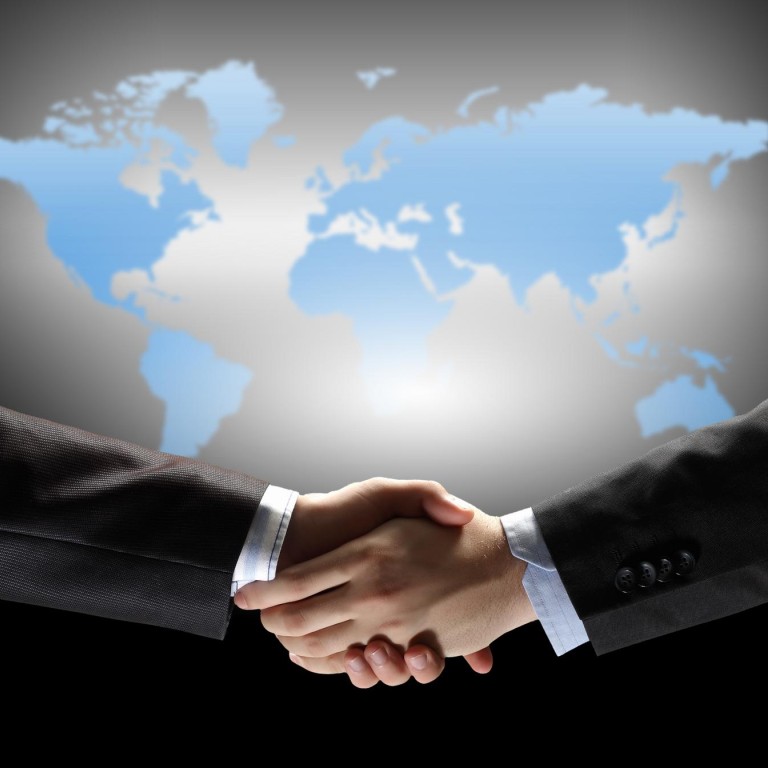
Free-trade agreements more to do with politics than goods and services
Free-trade agreements have more to do with political calculations than goods and services, and US-led Trans-Pacific Partnership is key example
Two months ago I flew down to Singapore to give a presentation titled: "Are FTAs history?". There was a particular mischievous pleasure in taking this to a Singapore audience, where the government, more than any in Asia, has invested massively in securing free trade agreements (a total of 38 at present).
The message was simple and persuasive: today in Asia, about 80 per cent of all trade is in intermediate goods that are progressing along long and complex supply chains that embrace a dozen or more economies. Negotiating bilateral trade agreements that secure preferential tariffs for the export of finished goods from one economy to a second economy is a total waste of time. It gave me great pleasure telling off Singapore officials for wasting so many thousands of hours, and so many millions of taxpayer dollars, negotiating deals that were useless and would never be used.
An Asia-Pacific trade agreement [under the TPP] that excludes China is next to useless
My second message was that officials should instead be focusing on a global multilateral trade deal or (since nothing is going to happen soon on the Doha round) on "mega-regionals" - trade agreements that include a larger group of economies that offer better prospects of embracing entire supply chains.
In the Asia-Pacific region, these mega-regionals include the Regional Comprehensive Economic Partnership, which embraces the 10 Asean countries plus China, Japan, Korea, Australia, New Zealand and India; the Pacific Alliance, which covers the Latin American economies of Colombia, Mexico, Peru and Chile; the Asean-China free trade agreement; and Asean itself, which aims to complete its "single market" by the end of 2015.
Then, there is the "big daddy" of mega-regionals, the Trans-Pacific Partnership (TPP), which is led by the US, excludes China, but embraces 11 other Apec economies in committing to new and much more challenging liberalising commitments in areas like intellectual property protection, procurement, state-owned enterprises and a wide range of services.
It is the TPP that is in the headlights as the heart of the economic agenda in President Barack Obama's grand tour of four Asian economies that began in Japan yesterday. But look closely at all of the antics this week on the TPP and you discover why my original thesis - that FTAs are history - is completely wrong. Because the TPP is much more to do with international diplomacy than it is to do with any economic benefits that might arise from trade liberalisation.
The same is true of most FTAs: they are pursued because of the valuable bilateral friendships and alliances being sealed in the process rather than for any practical trade benefits they might bring. But the TPP is a classic: it has been embraced and pursued by the US as the key economic component of the "pivot" to Asia strategy - pardon, we should be using the phrase "rebalancing" nowadays. Its essence has become geopolitical, not economic. A key component is China's absence from the table, even though an Asia-Pacific trade agreement that excludes China is next to useless.
This also explains Japanese Prime Minister Shinzo Abe's passion to seal a TPP deal with the US: it enables the US and Japan together to secure shared leadership of the main trade liberalising initiative in the region. In an article penned by Abe this week, he makes great play of Japan and the US working together to "unite 12 countries in the world's largest trading area".
He provides a grand overview of Japanese engagement in international trade, mentioning Vietnam, India, Australia, the US, the EU and even Latin America and Africa without once mentioning the elephant that stares at him across the East China Sea: "We are at the very centre of the Pacific Rim, and a neighbour to the world's growth centre stretching from Southeast Asia to India," he summarises.
The irony is that as it is geopolitics that is driving him and the US to pursue and prioritise the TPP, so it is local politics that will prevent any "deal" from being agreed this week. In Japan this means farmers. In the US, it means that Obama in truth arrives with empty hands: anything "agreed" with Japan can only be confirmed when the US Congress gives Obama trade negotiating authority, and then approves a deal. Obama has not yet sought this authority - and is unlikely to seek it until after mid-term congressional elections in autumn - and anyway, Congress shows no sign of giving it. Japan and the other 10 TPP negotiators are being asked to give Obama a blank cheque, and leave it to trust that Obama can get Congress to endorse it some time in 2015.
So this big trade deal is more to do with politics than economics. For Obama the defining challenge is to demonstrate that he is an emperor wearing clothes. For Abe, it is to come to terms with the reality that his - and our - economic futures sit as much with China as anywhere else, and to try to carve a glorious future without reconciling this reality is fantasy.

